

Why Are These People Laughing?

Trevor Howard and Celia Johnson are yukking it up with a balcony audience as the latest Donald Duck fades out. The movie is Brief Encounter. By 1945, Donald’s been blowing his stack for ten years, with far less by way of variation over the last five. Joel McCrea and fellow denizens of a chain gang surrender to spasms of mirth over Pluto’s collision with errant sheets of flypaper and a pair of suspenders in 1941’s Sullivan’s Travels. He’d been doing pretty much the same thing since the early thirties. Watching both these features today raises but one question in my mind --- Just what was so funny about these Disney cartoons? If they'd been watching Nasty Quacks (WB) or Red Hot Riding Hood (Avery-MGM), then yes, that laughter might make more sense, but watching Walt’s cartoons today gets not one chuckle from this jaded viewer. Was I born too late? Has our alleged greater sophistication rendered these once hilarious Donald/Mickey/Plutos impotent as laugh-getters, or is it just me? As it happens, my family took receipt of an 8mm print of that Pluto/flypaper segment when we acquired our first Bell&Howell home movie projector back in the late forties (it came gratis with the equipment). This was the first movie I ever threaded up to watch, but I didn’t laugh like Joel McCrea. This week I watched five Disney cartoons released in 1941 --- Canine Caddy (Pluto), The Nifty Nineties and Orphan’s Benefit (Mickey), and A Good Time For A Dime with Truant Officer Donald. I admired them all, but that was it. No other cartoons looked so grand, that’s for sure. When Pluto falls out of a tree, the leaves float down as a thousand individual cels patiently drawn and custom colored. I see pretty ink-and-paint girls (so described in The Reluctant Dragon) in lab coats applying that Disney magic in air-conditioned comfort, but was all this conducive to the sort of humor rival studios were getting into their 1941 cartoons? The collegiate amenities we see during our studio tour in The Reluctant Dragon bespeak comfort, but what about the comedy?


I found an exhibitor’s comment for Truant Officer Donald in an old Motion Picture Herald. He said it was terrific… reminded him of The Three Little Pigs. Maybe these shorts need a big audience, though when I’ve tried them with college students, they tend to lay flat. Droopy and Wolfy go over big, however. My problem with Disney cartoons is the monotony of them. Donald’s always getting tangled up with machinery, be it a washing machine, lawn mower, what have you. I’ve seen that duck electrocuted more times than I care to recall, but somehow it’s never as funny as when the same thing happens to Daffy over at Warners. Pluto’s forever beset with smaller animals who get the better of him. In Canine Caddy, it was a gopher. I get so tired of damned gophers trumping Pluto. It’s ritual humiliation, and since he’s the audience identification figure, I tend to feel his frustration all the more acutely. Just once I’d like to see Pluto snatch up a gopher at the end of one of these shorts, bite off the head, and enjoy the remains of the carcass before dipping his bloody paw into a finger-bowl and rejoining Mickey. Bon appetit, my man. As for the Mouse, he doesn’t even try to get laughs. The Nifty Nineties is mostly Mickey and Minnie riding around in a sputtering horseless carriage. Any shot in this cartoon would look great framed on your wall, but like Bing said to Bob in All-Star Bond Rally --- Tain’t funny, Hope, tain’t funny. I get the impression, especially after watching The Reluctant Dragon, that Disney artists were somehow timid about going after the big guffaws, as if scoring a real gag might somehow disrupt the well-oiled efficiency of that Burbank Utopia they'd so recently moved into. I don’t think Avery, Tashlin, or Clampett would have lasted long in such a conservative environment. For all of The Reluctant Dragon’s effort in making this look like a wacky and unpredictable place, I still sensed a baleful corporate policing of those pristine halls.


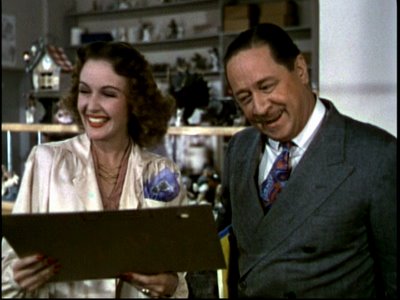
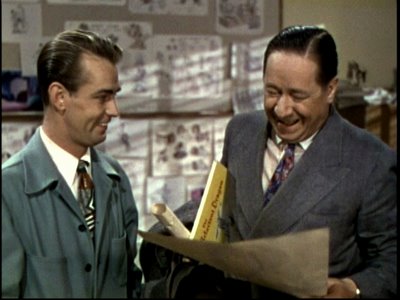
Would I enjoy these cartoons more if Disney hadn’t withheld them when I was growing up? There was no satellite network devoted to them then. The only place to catch these was the Sunday night World Of Color (where main titles were always removed) or reruns of The Mickey Mouse Club (ditto). Theatrical encounters were rare, if that. We might get The Yellowstone Cubs or Ben and Me with Disney features, but seldom a cartoon short. I never really saw Disney cartoons intact until I started collecting 16mm, and then they were pirated prints, or those educational service things where main titles were replaced. At least in the forties they got original RKO credits, even if the cartoons themselves were routine. Humorist Robert Benchley gets to see some of them made in The Reluctant Dragon. This feature is included in the Behind The Scenes At Walt Disney DVD. It’s a must for anyone interested in that studio’s operation and how it looked in 1941. The live action stuff is far more compelling than cojoining animated segments, but Disney had to deliver up some cartoon highlights, for that was his signature product and people still equated his name with drawings that moved. The Reluctant Dragon was regarded as something of a cheater in 1941. It’s really little more than a precursor to a typical Disneyland episode from the fifties, promoting Disney product and glorifying the magic environs of that unique studio setting. No other company would have had sufficient brass to charge admissions for what was essentially a tour of the lot. Benchley’s very presence implies a short subject, as does the animated subjects spotted throughout the 72-minute running time. He’s henpecked and nearly as reluctant as the titular dragon to keep his appointment with legendary Walt. His sour screen wife evokes Judith Anderson. Bob gets a look at comely Frances Gifford and you wonder why he’d ever go back home. Gifford’s playing a Disney staff member (were there such gorgeous women on the payroll at the time?) and she's one of a handful of pro actors drafted to simulate Disney employees. Frank Faylen is another, and live wire Alan Ladd provides spirited narration for the saga of Baby Weems. Ladd’s cast as an artist and story man, and I’d guess his own accomplished radio background got him the job here. Were it not for This Gun For Hire, we might have enjoyed Alan Ladd’s voice behind any number of subsequent True-Life adventures.
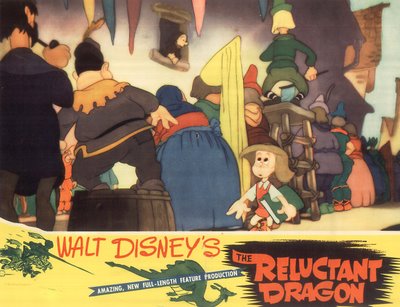
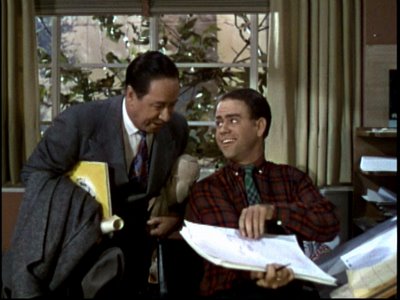
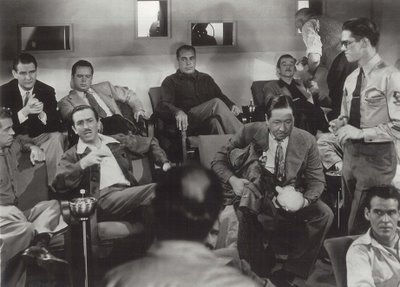
The best actor here is real-life animator Ward Kimball. He’s at all times relaxed and confident as he walks Benchley through the final stages of a Goofy cartoon and conducts a viewing of the final product on his Moviola. I don’t know how much screen exposure Kimball got in later TV programs (I assume not much, as I don’t recall seeing him), but I’d have to say there was a real missed opportunity here. He’d have made an affable host on some of those Disneyland shows about the history and technique of animation, but I guess there wasn’t sufficient room for both he and the boss. Still, it would seem that Kimball, of all the veteran artists who worked on the lot, had the clearest understanding of Walt’s character and the realities of working at Disney’s (based on interviews I’ve seen). He’d have no doubt been a fascinating guy to sit down and talk with. Quite a sensation knowing that while they were filming this idyllic depiction of life on the studio lot, strike talk was fermenting and disgruntled employees by the hundreds were preparing to walk out on Disney. That's perhaps the most dramatic subtext at work here. Were these people painting their picket signs at home even as they played happy employees for the Technicolor cameras? Walt’s own appearance is brief, but telling. He’s the distracted executive, issuing directives even as Benchley enters his screening sanctorum. Beloved Uncle Walt was still a decade away. This youthful Disney tucks a foot into his seat and regales his guest with a frankly labored cartoon segment to wrap up the show. The Reluctant Dragon we’ve waited for turns out to be an overlong latter-day Silly Symphony in which the title character is inflicted with an Ed Wynn-ish voice, a disagreeable enough prospect when it’s Wynn himself, let alone someone imitating that grating voice. The Reluctant Dragon would subsequently be cut up like so much cordwood and sent out as a variety of short subjects, making it all the more welcome as a finally intact feature on Disney’s DVD.
